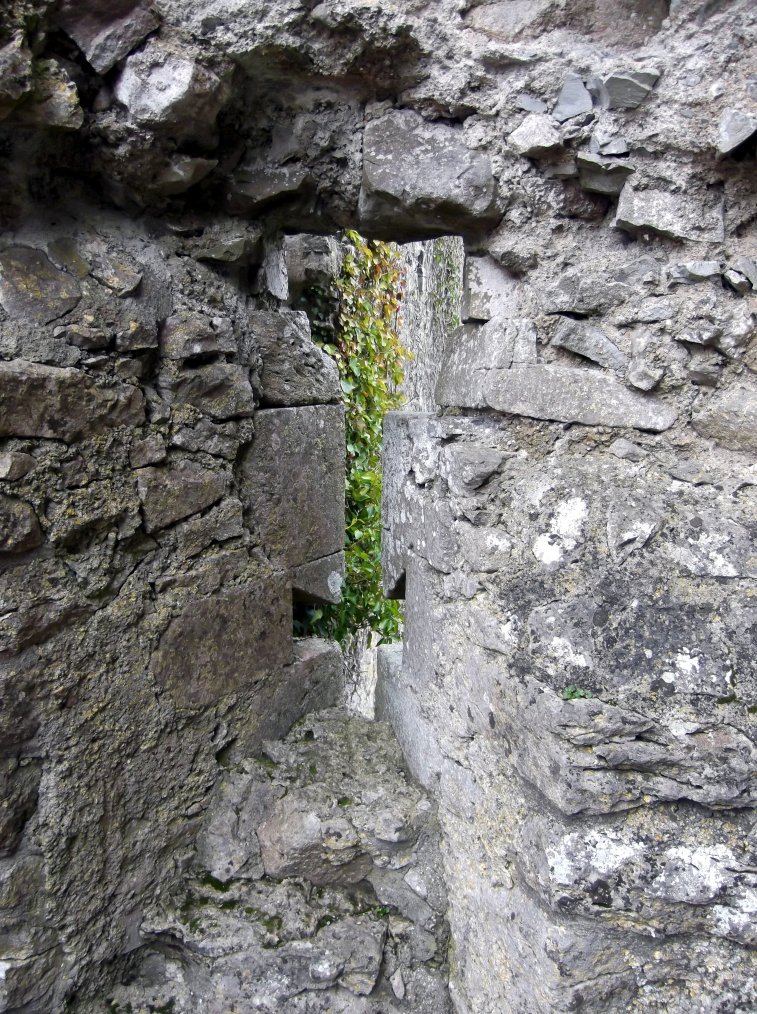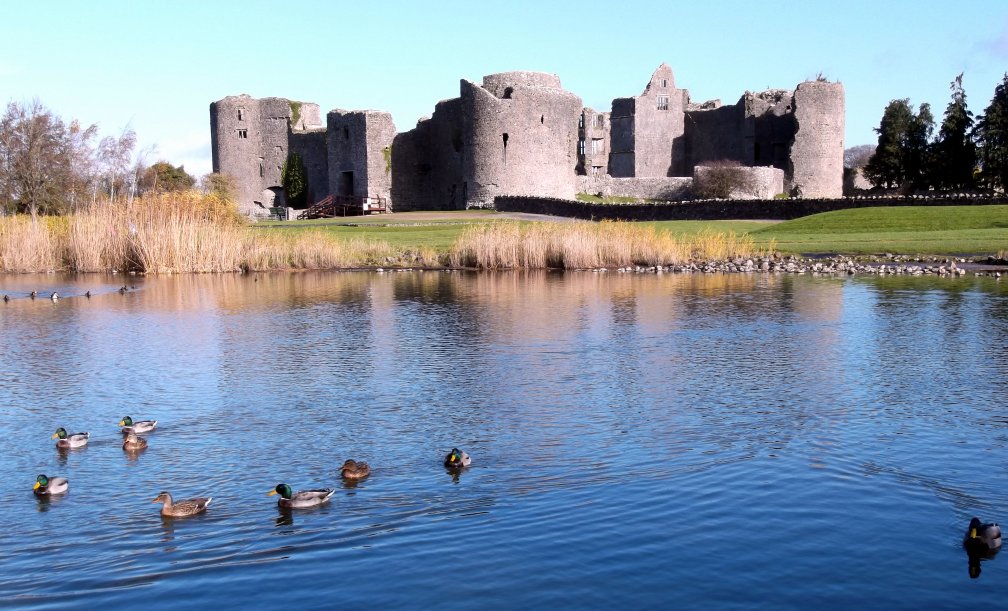Roscommon
Roscommon was probably conquered in the early thirteenth century by the
English family. It was acquired by the Crown on 30 July 1215, when
King John ordered the barons of the Dublin Exchequer to pay Philip
English (Angulo) an annuity of 10m (£6 13s 4d) for the cantref of Roscoman' in
Connaught until the king could requite him with other land in exchange. Richard Burgh (d.1242) of Askeaton, who had acquired the rights to
Connaught in 1224, obviously did not think that the English claim to
Roscommon was sound and consequently he ceased payments to Philip and
his heirs. Consequently on 30 September 1232, after Richard Burgh
had stepped down as justiciar, the new justiciar, Maurice Fitz Gerald
(d.1257), was ordered to let Philip English have 10m (£6 13s 4d) yearly at the
Dublin exchequer ‘as he was wont to receive for the cantref of
Roscuman until Richard Burgh was made justiciar of Ireland'.
In 1269 the government decided to fortify the district in the ongoing
war against the kings of Connaught. Consequently ‘Roscommon
castle was founded and almost built'. Such a comment suggests
that building went on very quickly. However, in 1272 the castle
was taken by King Aedh O'Connor of Connaught (1265-74). The
castle probably returned to English hands after Aedh's death as in 1274
Geoffrey Geneville (d.1314) had work done to the fortress.
Despite this, in 1276 ‘Roscommon castle was taken by an Irish
assault'. Once more the castle had to be rebuilt. Donogh
O'Kelly captured the castle in 1308 and finally the O'Connors seized it
again in 1340. They then held the castle until 1569 when it was
captured by Sir Henry Sidney, despite it being taken briefly in 1499 by
the earl of Kildare.
In the 1580s the fortress was remodelled as the
chief residence of Sir Nicholas Malby, the governor of Connought.
He turned it into a Renaissance fortified house, adding the current
sumptuous windows and fireplaces. Despite its downgrading from
fortress to palace the Catholics took the place in 1645, while the
north and south curtains were destroyed by the Parliamentarians in 1652
after
the
castle's surrender. Despite this it was besieged again in the
Confederate Wars when it was surrendered to Cromwell and only finally
fell out of use by the end of the Glorious Revolution of William III
(1689-1702).
 Description
Description
Roscommon castle is a typically ‘Edwardian' quadrilateral
enclosure with D shaped towers at each corner and a twin tower
gatehouse towards the east. The bulk of the castle is alleged to have been built for Edward I
in the 1280s, but all appears to be the same build as the
postern and should probably be assigned to the castle designed and
built for Henry III after 1269. The fortress consists of a single
ward, 165' by 130', with walls 8' thick. The corners were
equipped
with massive 3 storey D shaped towers 35' in diameter. These were
served by mural stairways, an obsolete design by the thirteenth
century.
The loop embrasures, where they survive, make shallow points and there
is the odd inserted 'Romanesque' doorway hidden in the ruins.
There are also some surviving crossbow loops. These have
German cross style sighting slits and again appear to be late
thirteenth century.
Centrally in the east wall of the enclosure was a massive twin-towered
gatehouse similar to those common in Wales. This structure was 72' wide and contained many commodious
apartments and the constable's chamber. On the first floor were
fireplaces and garderobes. This has been compared with Harlech,
but unlike Harlech and its few sister gatehouses, Roscommon has no rear
stair turrets which marks out the Harlech type of gatehouse.
Instead it is more akin to the normal twin towered gatehouse.
The rectangular postern, which is now used as the main entrance to the
site, is opposite the main gatehouse. This once had a portcullis
as well as a drawbridge judging by its pit. The tower
is 38' long by 29' wide. It is often stated, without a shred of
evidence, to be a relict of an early castle. The similarities and
apparent uniformity of the masonry would suggest the opposite.
There was once a moat and outer defences that apparently never
progressed beyond the wooden stage.
Copyright©2019
Paul Martin Remfry


 Description
Description